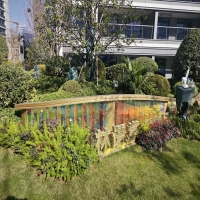Welcome to the website for landscape facilities products and knowledge.
How does the table’s design accommodate the placement of tabletop art installations or sculptures?
Modern table design has evolved beyond mere functionality to embrace artistic expression, with many contemporary pieces specifically engineered to showcase tabletop sculptures and installations. The accommodation begins with surface considerations: tables may feature recessed areas, textured zones, or dedicated platforms that create visual separation between the artwork and everyday table items. Designers often incorporate weighted bases and lower centers of gravity to prevent tipping, especially important when displaying heavier sculptural pieces. Material selection plays a crucial role—non-reflective matte finishes minimize visual competition with artworks, while durable surfaces like sealed wood or tempered glass protect against potential scratches from frequently moved installations. Some innovative designs include integrated lighting systems that highlight sculptures from below or adjustable height mechanisms that allow the table itself to become part of the artistic presentation. The most successful art-accommodating tables achieve a balance between aesthetic neutrality and functional support, serving as stage rather than competitor to the tabletop artworks they display. Design elements like discreet cable management channels further enhance this relationship by allowing lighting or kinetic elements in installations to operate cleanly. Ultimately, these design considerations transform tables from mere furniture into curated platforms that actively participate in the artistic experience.
Related search:

Recommendation
Metal and acrylic color-changing combined curtain wall for large-scale public landscape facilities